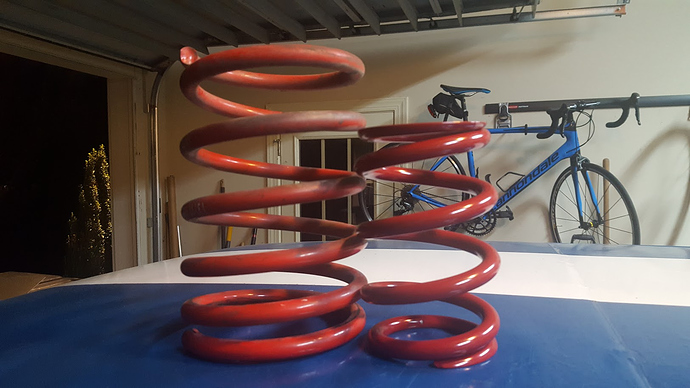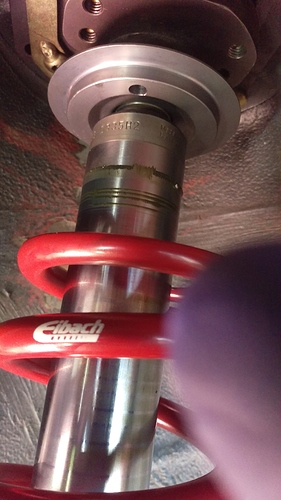Hi Folks,
I’ve been seeing a lot of discussion lately about our shocks, the lack of availability, and ideas to change. This is a thread to get the ideas and issues going. After the new spring change, I think it would be a good idea that we have a healthy discussion before any drastic measures are taken.
What we learned in NorCal on the first weekend with new springs:
The first thing we discovered is that matching ride height from the previous setup was much too low. We saw bottoming out on both the front and the rear. The rear height adjusters were hitting the white spring retainer cones. Check your cones to see if you have marks from the red adjuster screw.
We then learned that even with ride heights an inch higher than previous, we were very short on shock travel. We used zip ties on the struts to help determine that we are spending most of our time riding on the bump stops. We also did the test on a car with the old setup and discovered we’ve been riding bump stops the entire time. In the old setup, it is not as noticeable, and it looks as though “setting the car” in a corner meant leaning onto the bump stops. It wasn’t good, but the system worked together, and we raced our trashcans full of water. 
With the new setup we have the same issue, although with the different spring rates, it is much more noticeable, and causing much more instability.
We have about 1/2"-1" of shock travel at most before hitting the internal bump stops.
Has anyone looked into there shock travel and noticed the same thing?
We talked about possible solutions to the shock travel issue.
1- The cheap fix would be mandating a minimum ride height, but the cars would have to be back to stock height to possibly get off the bump stops.
2- New shock and hacking up the shock tube. This would be a good solution, but not in a spec class. We would need new, shorter bodied shocks, and shortening the shock tube by 2" or so. This would be a very expensive solution, especially for those of us who can’t do our own labor. This could mean people need to spend several thousand dollars to get the setup done. This is a low budget spec class, and a change this costly could see many people leave the series. It would also be much more difficult for newbie builds.
3- Working with someone to create a camber plate with the bearing on top of the strut tower, giving us the extra 1.5" of travel the plate takes up now under the shock tower. This may be the best solution as far as cost and ease go, if we want to retain a lower ride height. This idea would need some help from vendors to create something that works.
There may be other solutions to this problem, I’d love to see what everyone thinks. Has anyone else noticed the shock travel issue?
This is just some of the discovery we’ve had after our first weekend, so I’m sure there’s much more we can learn over time. My biggest is worry from here is rule creep and cost increases, as I know many of us run SpecE30 because it is a simple, “affordable”, series. The last thing we need is more adjustment in the car, causing a ton of expensive testing. The best part about the E30 is not having to turn a wrench on it. Pull it off the trailer and go racing. I really do like the new spring setup. It is a lot more predictable, until the shock bottoms out. If we can fix that issue affordably, it could be perfect.
Nick Thiemann
#3 FNTECH SpecE30
Nasa Norcal





